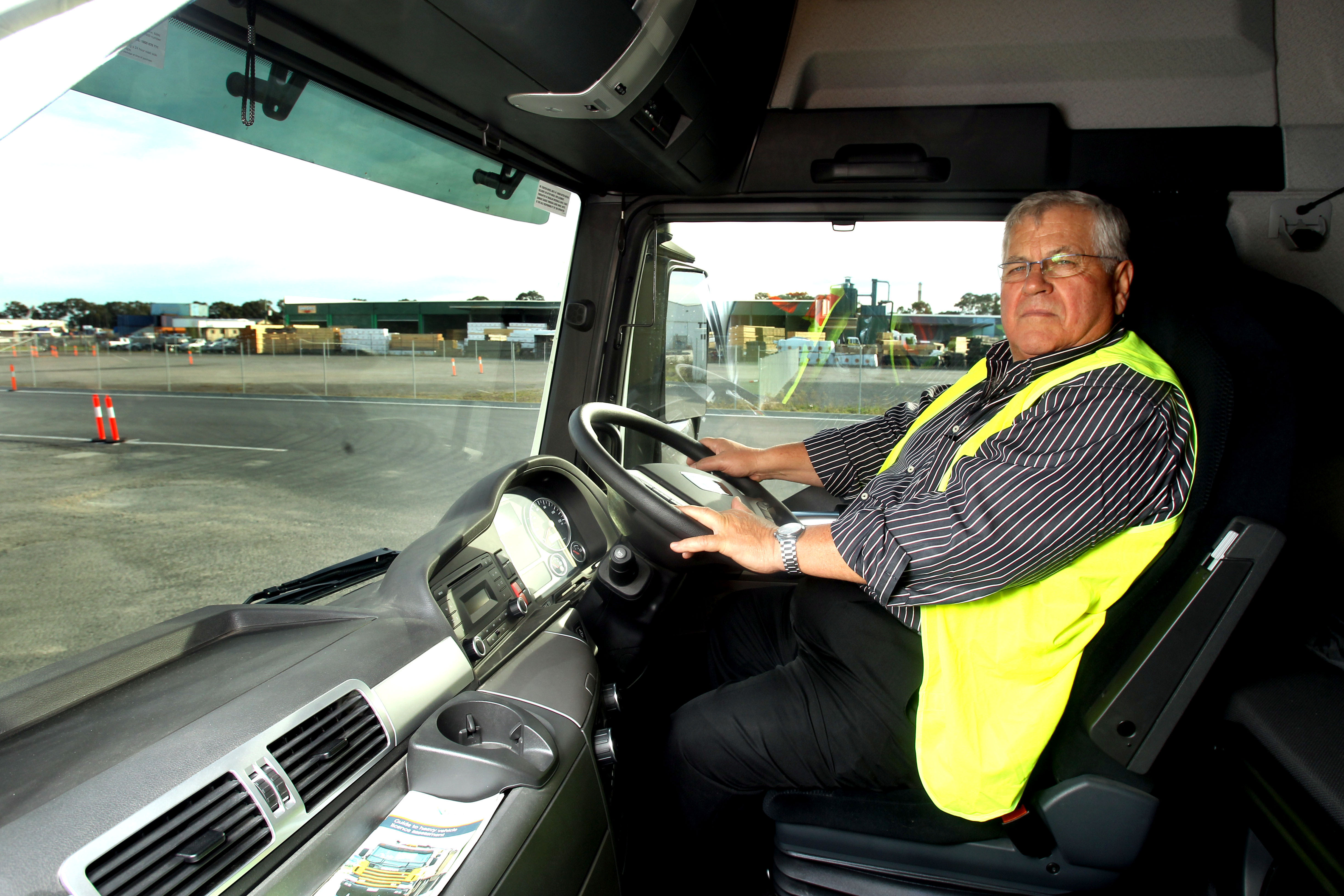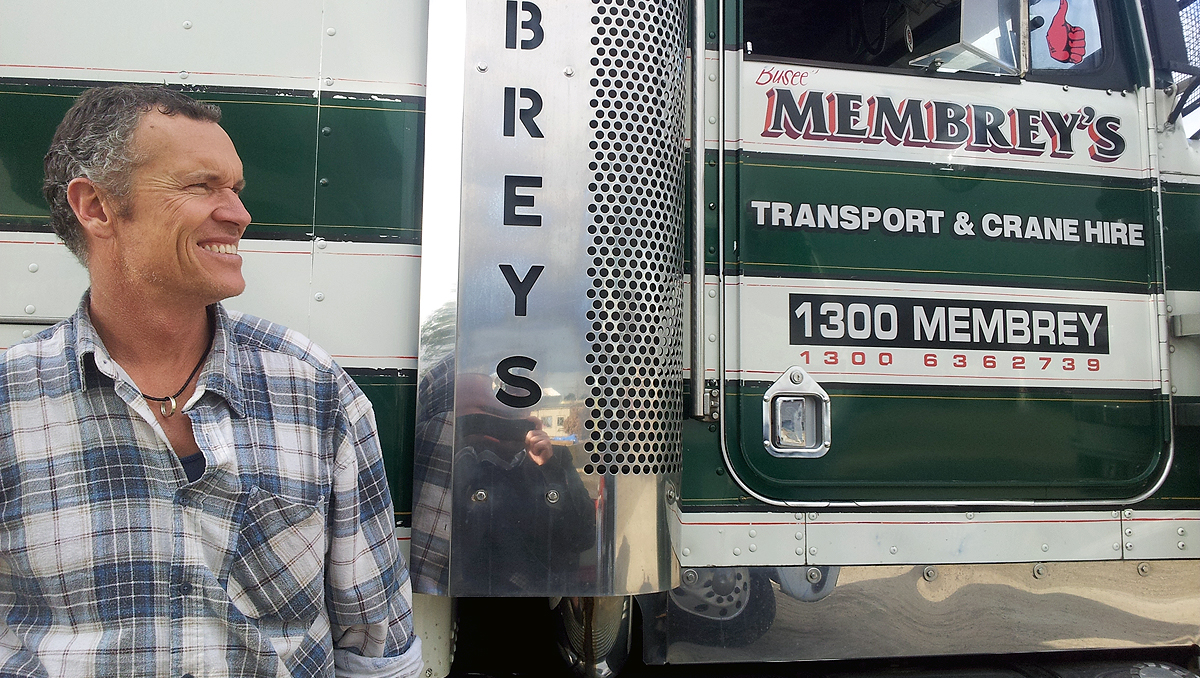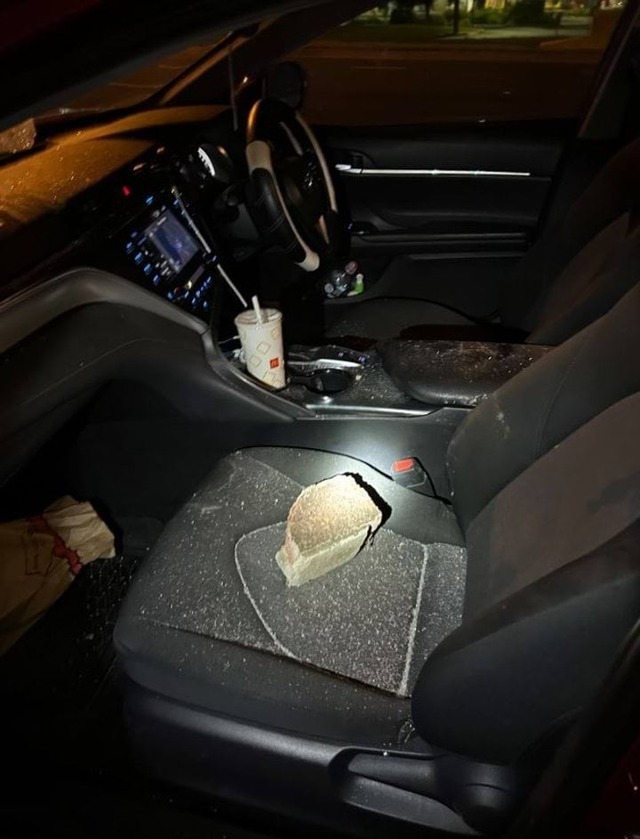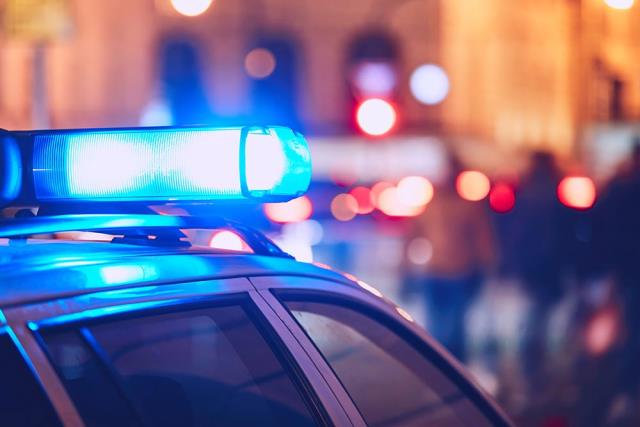B-triple trucks measuring more than 36 metres are set to hit the Monash Freeway and EastLink. The government says the move will decrease the number of heavy vehicles on the road. CAMERON LUCADOU-WELLS talks truck safety with industry players in Melbourne’s east and south-east.
IT may soon be ‘over and out’ for the CB radio call signs of truckies, says heavy-vehicle driver of 28 years Curtis Rayner.
High up in his leather-clad Kenworth cabin, the Yarra Valley truckie uses the CB more for traffic alerts these days, rather than enjoying banter with mates during long convoy runs interstate.
This year, Rayner has swapped the massive interstate treks for cross-city jobs for Dandenong-based Membrey’s Transport & Crane Hire.
Gone are the convoys and the call signs — a sign of a changing culture, the younger breed supplanting the older drivers’ camaraderie.
Rayner says it used to be hard to get a truck-driving job, taking years of hanging around, learning the ropes and riding as a passenger for long treks. “You had to earn that trust,” he says. “It was like an apprenticeship. You learned the culture.”
These days, a one-day course at a driving school for $1300 is a guarantee of work — “there’s such a demand for drivers” — but carries no appreciation of the truckie’s code, according to Rayner.
He hasn’t had a serious crash, though he vividly remembers narrowly avoiding a jackknife at 100 km/h on the way to Sydney. As he rounded a corner, he swerved by banked-up traffic on a windy pass. Nothing serious came of that.
Some of his mates, however, have been killed. One fatigued mate died after crashing into a stationary prime mover in a highway parking bay, also killing the truckie in the second vehicle.
When things go wrong, they can go monstrously wrong in a truck. When fatalities happen, Rayner feels the whole industry gets tarred.
There have been recent moves to further regulate trucks clogging up Melbourne’s roads.
The state government recently abandoned plans for bans on trucks in the Monash Freeway’s right-hand lane, despite pressure from the RACV.
“VicRoads traffic modelling suggests that introducing [such] restrictions on the Monash Freeway would add to congestion and have very limited safety benefit,” Roads Minister Terry Mulder said in March.
Instead the government introduced 36.5-metre B-triples, otherwise known as high-productivity freight vehicles, which could carry two 12-metre containers on major roads such as the Monash.
Four B-triples could carry the same load as six 26-metre B-double trucks — in theory reducing the number of heavy vehicles on Victorian roads.
Trucks are banned from the right-hand lanes of Princes Highway between Geelong and Melbourne and the Eastern Freeway. The restrictions haven’t helped traffic flow, Rayner says.
“If a truck is doing 100 km/h in a 100 zone, what difference does it make? It’s neither here or there.
“It almost has a negative effect. When you overtake someone in the middle lane doing 90, it forces you to go in the left lane, which is dangerous and wrong. It also causes more congestion in the left lane for merging traffic.”
Yugo Driving School and Dandy Truck Sales managing director John Sculac says right-hand-lane bans should be placed on trucks on city roads, particularly the inner-city tunnels.
He said too many heavy trucks are “up the arse of cars all the time”. There should be a compulsory space between vehicles, such as 70-100 metres, to ward off tailgaters.
“I haven’t heard of anyone getting booked for tailgating,” Sculac says. “If someone’s not a safe distance behind, book him!”
“If you go through Italy, trucks are only allowed to go at 90 km/h and cars 130. All the trucks are in the side lane — you see 400 trucks sit there at 90 and everyone’s happy.
“Here you see more semi-trailers in the right lane than in the left lane. All the exits are on the left and they want to be in the right lane. They do it because they can.”
There’s no mandatory minimum for hours of training. Some drivers put in as little as a few hours’ training at a truck school before they get a licence — six hours behind the wheel for a B-double licence. Sculac says there should be a compulsory 20-hour minimum to iron out some of the “cowboys”. It would take a one-day course cost from $1300 to $3000. “It would give us more work, yes. But it will also make sure there are better drivers.
“At the moment they’re with us for a day. We’re not going to have much impact on their attitude.”
“Cars can be at fault but the truck drivers are supposed to be professionals. Treat the car drivers as though they are idiots and allow for that.”
Rayner argues that trucking has become less fun, especially under a Victorian police crackdown two years ago on doctored logbooks, drugged drivers and tampered speed limiters.
At its height, Rayner was pulled over three times during a trip to Sydney. Several of his mates have been “hounded” out after a series of fines by the police’s heavy vehicle unit.
After a 45-minute inspection — including a drug test — by the side of the road, a driver could foot more than $700 in several fines.
“You’re shitting yourself when you get pulled over, thinking how much it will cost you. We’ve got guys dropping off left, right and centre.”
By law, a truckie is limited to 12 hours’ driving a day, coupled with at least 12 hours’ rest. Any small mistake in the logbook can attract a fine.
The crackdown has stopped companies pushing impossible errands on drivers. Rayner says he was told to drop off a load in Campbelltown, near Sydney, at 9pm and return to Essendon by 7am the next day.
Rayner says many have retired, stressed out by the fines and “Big Brother looking over your shoulder”.
He admits there used to be some cowboys on the road but “going up the highway in long convoys used to be good fun”.
“I preferred the long highway trips. You get used to doing your own thing and no one can bother you.”








